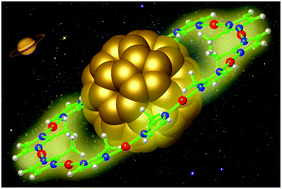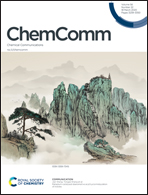Coordination disk-type nano-Saturn complexes†
Abstract
The first coordination disk-type nano-Saturn complexes, [Cu10(Mim)10]⊃C60 and [Cu10(Mim)10]⊃C70 (Mim = 2-methylimidazolate), were assembled under one-pot solvothermal conditions. The highest number of 30 C–H⋯π interactions between the [Cu10(Mim)10] disk and the C60/C70 surfaces drives the formation of the nano-Saturns. The calculated interaction energy is much larger than that of most of the reported disk-type nano-Saturns. Different photoinduced charge/energy transfer mechanisms are present for both nano-Saturn systems to quench the intrinsic luminescence of the [Cu10(Mim)10] disk.



 Please wait while we load your content...
Please wait while we load your content...